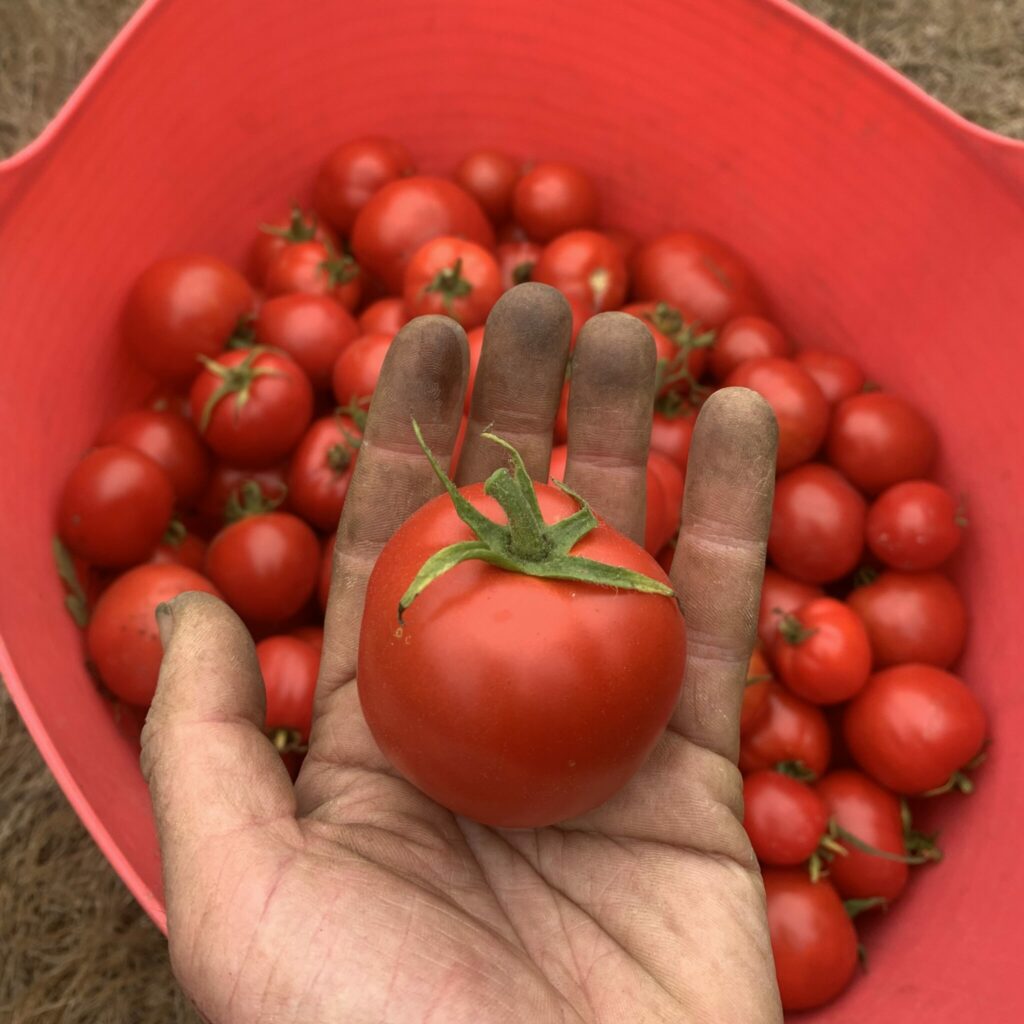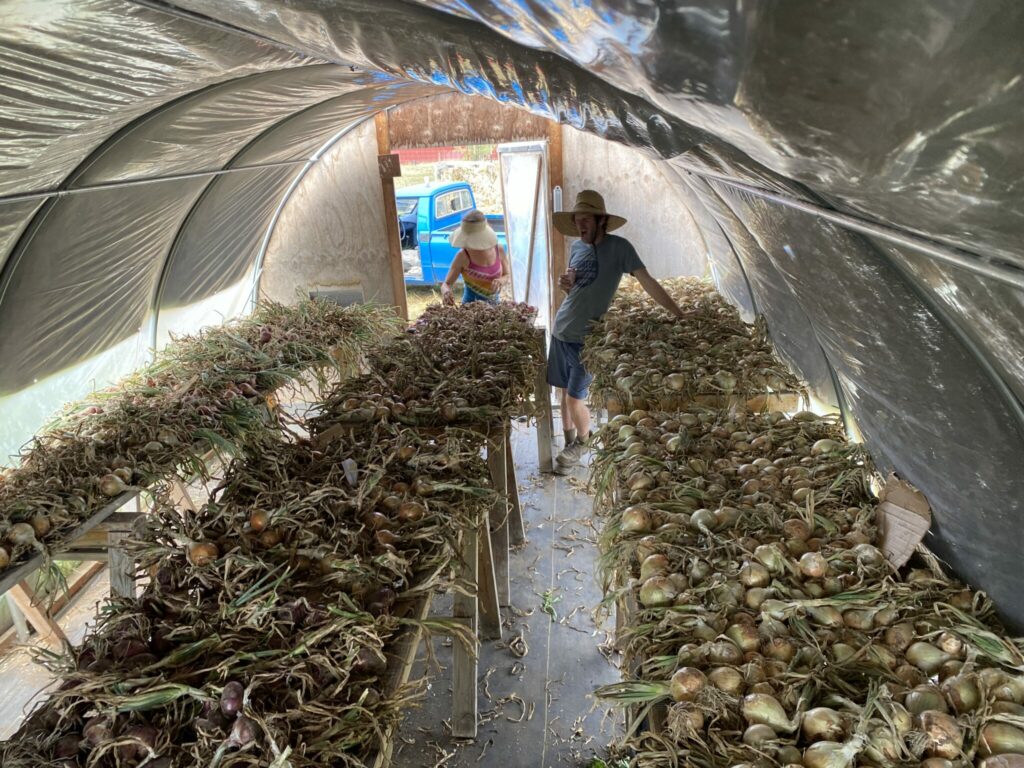 Welcome to your life as a Fall CSA member, the club of squash soup supporters, allium enthusiasts, root rooters, and hearty green heart throbs. It’s an eclectic posse of folks we’ve got here, unafraid of fennel and cool with kohlrabi (or so we hope!). The Fall season holds a special place in our woolen hearts. When Nathaniel and I started off as a wee lil farmer lad and lass we thought we may very well be exclusively cold weather growers. The cold season veg market was wide open, the foods were our faves, and it felt thrilling to picture pulling veggies out from under layers of row cover and mulch amidst the whipping winter wind. Some of you were there with us, up at Greenbank Farm where it all began.
Welcome to your life as a Fall CSA member, the club of squash soup supporters, allium enthusiasts, root rooters, and hearty green heart throbs. It’s an eclectic posse of folks we’ve got here, unafraid of fennel and cool with kohlrabi (or so we hope!). The Fall season holds a special place in our woolen hearts. When Nathaniel and I started off as a wee lil farmer lad and lass we thought we may very well be exclusively cold weather growers. The cold season veg market was wide open, the foods were our faves, and it felt thrilling to picture pulling veggies out from under layers of row cover and mulch amidst the whipping winter wind. Some of you were there with us, up at Greenbank Farm where it all began.
Year one, we enjoyed a shockingly mild winter, allowing us to pull off a substantial CSA well into February without really knowing what we were doing. Beginners’ luck for sure! Year two, Mother Nature didn’t hook us up in the same fashion and instead dumped heavy snow for our last share of the season. This shut down the roads to all but four-wheel drive vehicles (which we didn’t have) and public transit. We proudly delivered shares up to the Coupeville Hospital on the bus. A year or so after that, we had to cut our season off a week earlier than expected thanks to a six-day hard frost that killed even our heartiest roots under the thickest winter row cover.
Thus, over the past 12 years running a fall/winter farm share program, we’ve grown cautious about pushing the season late into the year. We’re admittedly also a little soft now that we’re more aged and our backs and hands feel the realities of cold weather. BUT- we are still passionate about farming this time of year! The harvests are so much less hectic without the slow-to-pick summer crops (we’re looking at you beans and zucchini). We don’t need to rush irrigation to and fro. And the crops are all weeded and mature, just hanging out waiting to be picked.
It fills the heart with elation to look around and see 600 cabbages ready to kraut, 800 brussel stalks begging to be roasted, and a whole tunnel of cleaned onions, garlic, squash and shallots aching to be masticated (I know, those guys are odd). We’re breathing easy, sleeping more, and feeling thankful for the cooling weather and shifting day length. Hope you can say the same.



